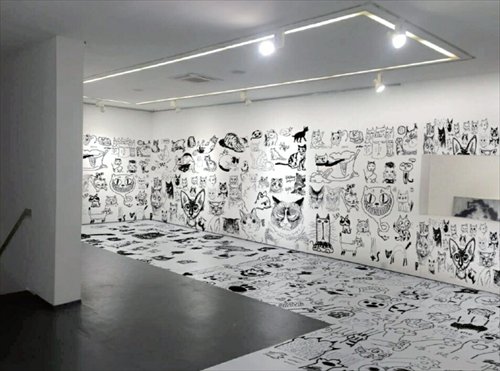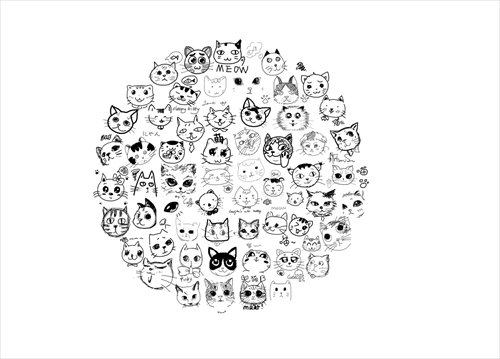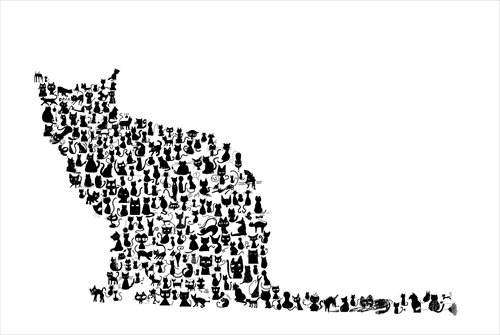HOME >> METRO BEIJING
New media graffiti
By Chen Ximeng Source:Global Times Published: 2015-4-6 19:38:01
Exhibition explores new ways of expression through online doodling

100,000 Cats, an exhibition made possible by the Toshow doodle website is on display at 798 Art Zone. Photo: Courtesy of Life-Fun Studio

Photo: Courtesy of Life-Fun Studio

Photo: Courtesy of Life-Fun Studio

Photo: Courtesy of Life-Fun Studio
Over 100,000 doodled cats chosen from more than 300,000 works collected from Net users for a project called "100,000 Cats" have been on display at an offline exhibition since Saturday at 798 Art Zone. The doodles included cats of different shapes and expressions - dancing cats, cute cats, lazy cats and lonely cats.
"It is amazing to see so many different cats. These participants are full of creativity, beyond what I could've imagined," said 19-year-old Mo Wang (pseudonym), a university student in Beijing who went to the exhibition on Saturday.
100,000 Cats is part of a project by Life-Fun Studio, a Changsha-based design company. The objective is simple: Participants log into a website through WeChat and create their own "graffiti" by using their fingers to draw on the screen of their smartphone. They can share their work with other participants on that page as well as with their friends on social media and receive feedback. The project was launched last October via WeChat and was popular, so in March, Life-Fun Studio launched the graffiti app Toshow.
"Public participation has gone well beyond our expectations," said 24-year-old Spec Su, creative director of Life-Fun Studio.
Wang also contributed to the project - she loves making and sharing doodles on the Internet and likes to doodle images of her friends in her notebooks and textbooks. It's people like Wang that Su is after. He said that unlike traditional ways of graffiti, graffiti through social media has made it easier for people to express themselves. And unlike painting, it is very simple to do graffiti online as long as the person doing it has a good idea to start out with.
However, the graffiti app does change the meaning of the activity from an individual, behind-the-scenes act to a more public one, Su said.
"In China, graffiti on public spaces is not as developed as it is in Western countries. Graffiti is a special kind of expression, but [China] is not that open to freedom of thought, so we see more graffiti in books and bathrooms and private spaces, than on the streets," Su said.
"Thanks to the Internet, people can express themselves and not make their identities public, so these hidden desires [of expressing oneself] have been exposed. And now more and more Net users like expressing themselves online, not only by words, but through "graffiti."
Graffiti via social media also allows the art to have an extended reach to a wider range of people, said George Tan, a Beijing-based art critic.
"Graffiti is a part of public art, and traditionally, it exists on public buildings and is more like a performance art," Tan said. "But now that we have entered the Internet era, graffiti lovers and even common people can gather more easily to form a large community and lead a new trend, which was impossible before."
Tan said that although the existence of the Internet has sped up the communication of graffiti culture, there may be disadvantages to easier access to this form of art. "Strictly speaking, though, the art in the online app, [Toshow] is more like a free doodle like the drafts and semi-finished forms of graffiti art," he said. "If artists decide to turn these drafts into real works of art on real public spaces, then it can become a public event, which could have a more long-lasting effect on reality."
Posted in: Metro Beijing